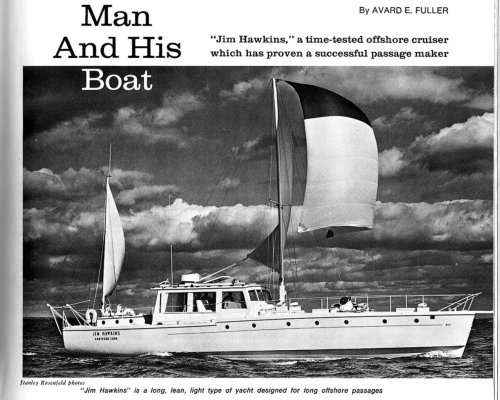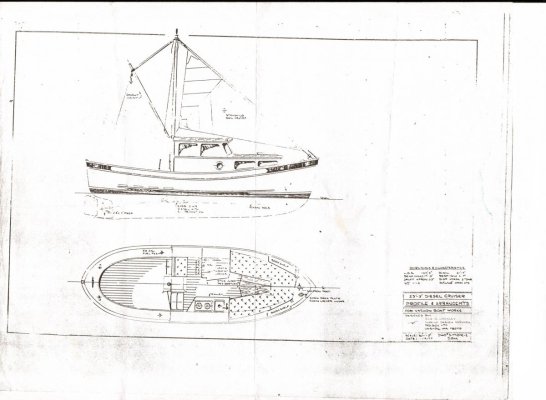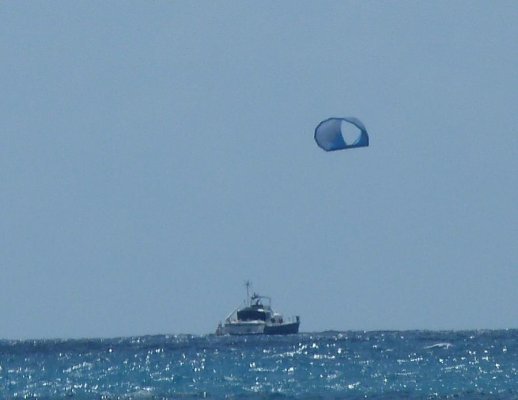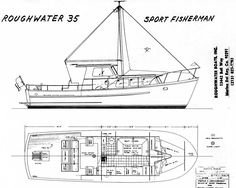Hello everyone! Yes, I am new here, and just want to say I really enjoy reading all the awesome questions and answers here on this forum.
O.K. so here goes my first question:
I have been reading many threads concerning adding one or more of the following to a traditional Trawler for purposes of either sail assist, or Sail Steadying; Get Home Sail; Ride Sail; Steadying Sail, and/or Lugger Sail. I do understand the many replies in which it has been pointed out that a trawler just does not have what it takes to truly have a Sail Rig for purely propulsion purposes. namely hull design, Keel, Rudder, nor proper Ballast. But what I was considering is more of a Spinnaker type Sail Rig for running with the wind.
I have a 60 foot Concorde Motor Yacht, 16' Beam and about 60k pounds (loaded and provisioned). Not looking for total sail propulsion via a Spinnaker, but more along the lines of assisting the 8V71tti Detroits to maybe help save some fuel?
Any ideas or even the flat out no way, would be appreciated.
I do hope that everyone had a wonderful Christmas and wish everyone a pleasant stress free (as much as possible) New Year.
In My Humble Opinion (IMHO), sails are not worth it in trawlers. The sails, the mast(s), and their rigging all require frequent maintenance, interfere with the topside space, complicate operation of the vessel, and provide little improvement at the upper trawling speeds.
From physics, under optimal conditions and below hull speeds, increasing the speed of a displacement boat by
26% requires
doubling the power of the vessel propulsion. Therefore for the size and displacement boat you are referring to, a noticeable speed impact probably requires a lot of sail area, even a multi-mast solution. Such a proposition IMHO is an unacceptable complication in the operation of the boat.
It is based on this simple view that I got rid of the mast in my trawler and concluded that I can double the range of my trawler by reducing the speed to 80%. That is, if I can go for 1500 miles at
7 knots, I can go 3000 miles at 5.6 knots.
The governing formula is: The ratio in fuel consumption is proportional to the cube of the ratio of the velocities.
Power2/Power1 = K cube (Speed2/Speed1)
and fuel consumption is proportional to power. So cube (1.26) = 2 or 26% speed increase doubles consumption of fuel.
Other boaters may consider a little bit of sail work when operating the boat as a pleasurable activity and they may have a different view about sails in a trawler. I do not.







